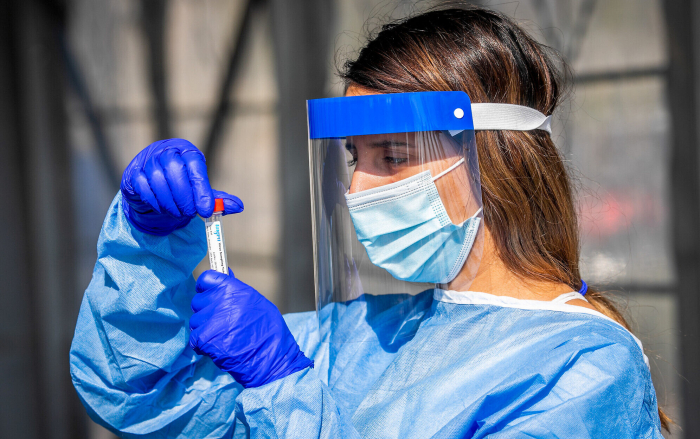Many governments’ initial reaction to the appearance of the new COVID-19 variant – attempting to ban travel from South Africa and neighboring countries, even though it had already spread far and wide – seems a bit desperate. In fact, governments may be better prepared than they think for whatever comes next.
There is an adage that you cannot have back-to-back financial crises. The implication is that a financial crisis causes people to be more careful – so any bank, investment firm, or investor who survives one crisis will not be taking big risks anytime soon. But two years after the onset of the COVID-19 pandemic forced lockdowns, quarantines, and other restrictions, the arrival of the Omicron variant is forcing people to ask: Are we about to go through it all again?
Many governments’ initial reaction – attempting to ban travel from South Africa and neighboring countries, even though Omicron had already spread far and wide – seems a bit desperate. In fact, there are three reasons why governments may be much better prepared than they think for whatever comes next.
First, most policymakers have by now grasped the key importance of defending the most vulnerable people against the virus. This means, whatever happens, better protections for nursing homes and other congregate care settings. Many lives were lost in 2020 because politicians in the United States, Europe, and elsewhere struggled to understand the importance of this point. One hopes that level of miscomprehension is never repeated.
Second, vaccines work. On this issue, there was widespread political consensus in 2020, and the vaccine development programs stand out as a historic success for public-private science partnership. Unfortunately, in 2021, people have become confused – or perhaps deliberately misled. Still, over 68% of Americans have now had at least one shot, and boosters are widely available. The US goal remains to vaccinate as many people around the world as possible, and it should step up the pace. Omicron has shown once again that no one country can hold COVID-19 at bay by itself.
Third, governments have a considerable amount of COVID testing capacity. When this capacity was developed in 2020, some people expressed concern that there would be no long-term need. But while there is still some debate about exactly which tests to use when, epidemiologists and public-health experts have made a great deal of progress on what works for various populations. We just need to keep at it, for example through the federal government’s Expanded Testing program. (For more data and the latest assessments of what needs to happen, I recommend Mara Aspinall’s website, HealthCatalysts.com, and her free weekly newsletter.)
Ideally, any community – childcare facilities, schools, universities, and companies – would be protected as much as possible by vaccination, backed up by a regular testing program and thoughtful use of masks (and other mitigants). These tiers of protection improve the odds that school and work will continue in as normal a fashion as possible, even in the face of new variants.
The US, however, is still struggling to overcome the problems posed by former President Donald Trump’s persistent denial that COVID-19 posed a genuine threat. The work of public health officials was disrupted for political purposes, resulting in a great deal of confusion (and myths) in the communication of everything that matters when it comes to fighting the pandemic.
The legacy of Trump’s mixed messages has become the main weakness in US pandemic defenses, including against Omicron. Without it, the US would have more people vaccinated, more willingness to be tested, and less fighting about masks. It is a terrible irony of contemporary America that many of the people who are least protected against new variants are those who take Trump and his public health views more seriously.
In 2020, Trump and his allies claimed that fighting COVID-19 undermined the economy – for example, because it involved lockdowns. That logic was always flawed. Local economies shut down on the order of governors only when hospitals were flooded with infected patients and unable to cope. Hospital overload is the ultimate circuit breaker and still what must be avoided at all costs. If emergency services cannot function, people die from heart attacks and accidents at much higher rates. If cancer care and other more routine procedures are disrupted, more people die.
The bottom line is that fighting harder against COVID-19 is exactly what we need to do if we want to avoid economic turmoil. Closing and reopening economies is costly for everyone. In addition to all the obvious direct costs, supply-chain disruptions fuel large price movements and appear to be contributing to inflation. Higher inflation, in turn, makes it harder (or riskier) for the central bank to support the economy, should that be necessary.
Unfortunately, Trump’s legacy has left President Joe Biden’s administration little option but to stay the course: keep the nursing homes strong, persuade as many people as possible to get vaccinated, and continue to improve the availability of high-quality testing. At the same time, however, the administration must confront that legacy head-on. Surgeon General Vivek Murthy’s campaign against health misinformation is one promising initiative. To protect themselves and the economy, Americans – and the world – need many more.
Simon Johnson, a former chief economist at the International Monetary Fund, is a professor at MIT's Sloan School of Management and a co-chair of the COVID-19 Policy Alliance. He is the co-author, with Jonathan Gruber, of Jump-Starting America: How Breakthrough Science Can Revive Economic Growth and the American Dream and the co-author, with James Kwak, of 13 Bankers: The Wall Street Takeover and The Next Financial Meltdown.
Read the original article on project-syndicate.org.
More about:
















































